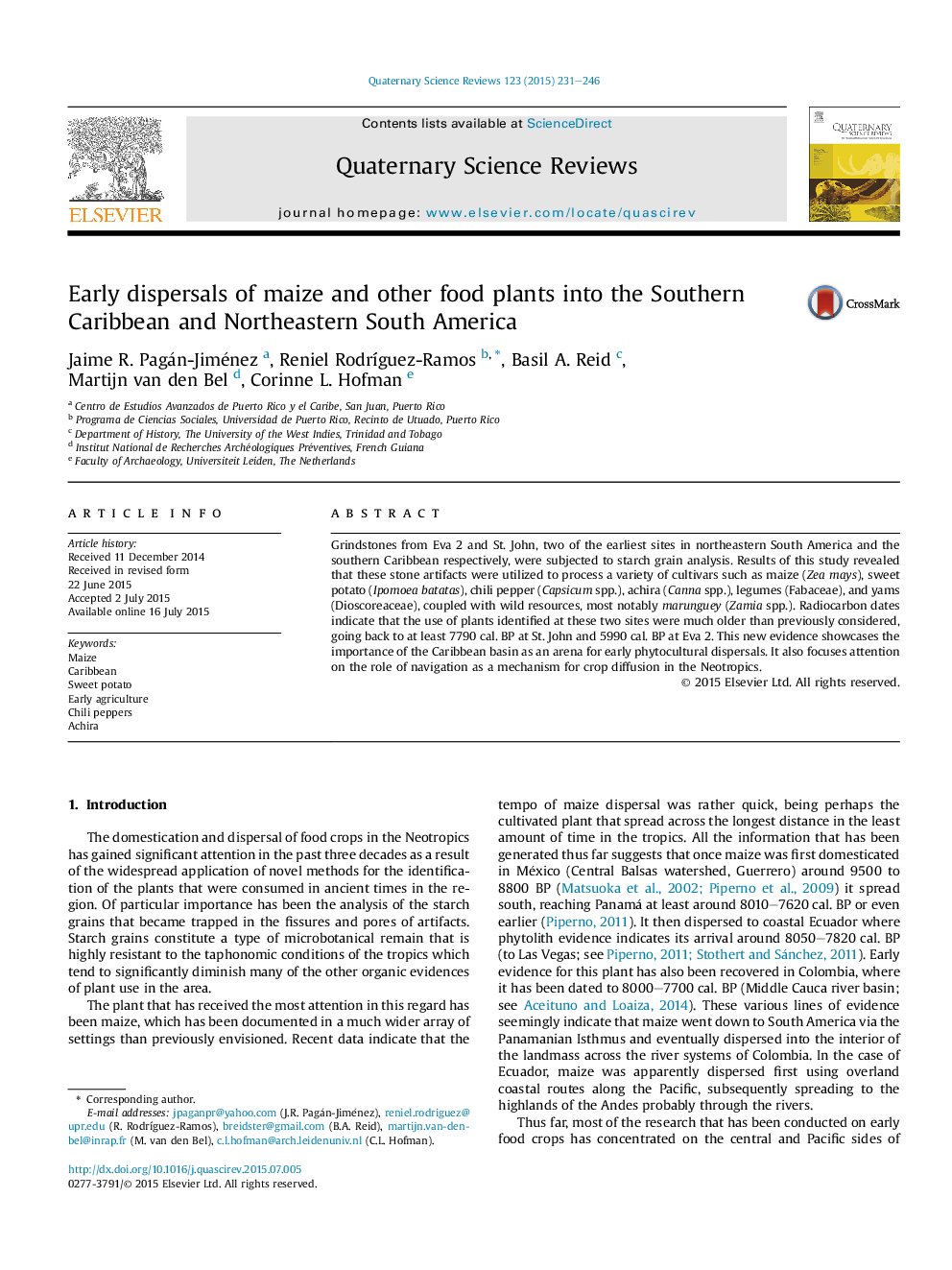| کد مقاله | کد نشریه | سال انتشار | مقاله انگلیسی | نسخه تمام متن |
|---|---|---|---|---|
| 4735297 | 1640811 | 2015 | 16 صفحه PDF | دانلود رایگان |
• We present early starch evidence for maize from the Caribbean and South America.
• The earliest evidence in the Americas of achira and chili peppers is documented.
• The Caribbean Basin is proposed as an early context of plant dispersals in the Americas.
• Navigation is considered a potential mechanism for crop diffusion in the Neotropics.
Grindstones from Eva 2 and St. John, two of the earliest sites in northeastern South America and the southern Caribbean respectively, were subjected to starch grain analysis. Results of this study revealed that these stone artifacts were utilized to process a variety of cultivars such as maize (Zea mays), sweet potato (Ipomoea batatas), chili pepper (Capsicum spp.), achira (Canna spp.), legumes (Fabaceae), and yams (Dioscoreaceae), coupled with wild resources, most notably marunguey (Zamia spp.). Radiocarbon dates indicate that the use of plants identified at these two sites were much older than previously considered, going back to at least 7790 cal. BP at St. John and 5990 cal. BP at Eva 2. This new evidence showcases the importance of the Caribbean basin as an arena for early phytocultural dispersals. It also focuses attention on the role of navigation as a mechanism for crop diffusion in the Neotropics.
Journal: Quaternary Science Reviews - Volume 123, 1 September 2015, Pages 231–246
